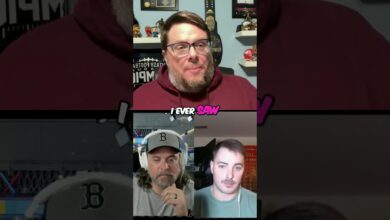The Best NFL Draft Fits Based on Past Pick Athleticism
With the start of the NFL Draft approaching, there are a lot of opinions floating around about the best NFL team fits for the incoming rookies. NFL Mock Draft Database has a Consensus Mock Draft section that matches players to the team where they are being mocked the most. For example, Bryce Young is being mocked to the Panthers with the first pick in 56% of mock drafts. I thought it might be interesting to compare the athletic traits of these prospects to how their matching NFL team has drafted in the past.
Arjun Menon from PFF has a great app that lets you do this by position. Where I’d like to expand on that is by incorporating which combine statistics actually matter for predicting NFL success. This allows us to view the NFL teams that are focusing on the right combine metrics in their draft process. Kevin Cole from Unexpected Points has a fantastic article that highlights how important each combine drill is for both NFL draft capital and actual NFL value.
For example, the 3-cone drill is the best indicator of NFL value for running backs. Many of the other drills, like the 40-yard dash and the broad jump, are more predictive of a player’s NFL draft position than their performance in the league. The problem with this finding is that essentially no running backs run the 3-cone drill anymore. At the 2023 combine, only Evan Hull and SaRodorick Thompson Jr. completed that drill. As a result, I’ll be focusing on wide receivers and tight ends here.
The below graphs take combine and team draft data from 2011-2022. They compare the drill-weighted athleticism of a team’s draft picks with how much draft capital they’ve spent at the position. For WRs, that athleticism score combines a player’s 40-yard dash, weight, 3-cone, broad jump, and vertical jump. It is weighted by how predictive each drill is on future NFL value, so the 40-yard dash has a higher weight than the broad jump (as an example).
For TEs, it’s similar, but with the drill/metric order being weight, 40-yard dash, shuttle, vertical jump, and broad jump. For draft value, I’m using the Fitzgerald-Spielberger trade value chart. It focuses on the second contract amounts of each position to gauge the value of each draft selection.


Rather than go through each NFL team, I’ll focus on a few teams where the top WRs and TEs in this class are being mocked. For those teams, we’ll see how the mocked player fits with that team’s historical profile.
At WR, Jaxon Smith-Njigba is currently mocked most frequently to the Houston Texans. It’s not a great fit relative to the athletic profile of the average Texans’ wide receiver draft pick. JSN’s speed is slightly slower and his weight is slightly lighter than the Texans’ typical pick. Additionally, JSN’s broad jump and 3-cone drill do not align. However, his values in those drills crush the averages of most NFL teams. As a result, it’s not really a fit issue if his explosiveness and short-area quickness are outliers in a great way.
Perhaps the best player/team fit for any WR on this list is Zay Flowers to the Patriots. Compared to the rest of the league, the Patriots have drafted fast, lightweight players with a particular focus on elite broad jumps. Flowers fits that bill perfectly with his 4.42 40-yard dash and 127” broad jump at 182 pounds. The draft prop markets have also been moving toward Flowers being the first WR selected in the draft. I’m particularly interested to see if Flowers to the Patriots happens on draft night.
Both Jordan Addison and Quentin Johnston are being frequently mocked to the Los Angeles Chargers. Historically, the Chargers have drafted slower and heavier WRs, with above average broad and vertical jumps. Johnston fits that bill much better than Addison. Johnston weighed in 35 pounds heavier than Addison at the combine. However, both had very similar 40-yard dash times (depending on how you adjust for pro day results). In addition, Johnston had elite broad and vertical jump measurements relative to the historical average WR and the top of the 2023 class. Addison over Johnston to the Chargers seems unlikely to me based on this analysis.
Before talking about specific tight ends, I wanted to address the elephant, or should I say bear, in the room. The Chicago Bears have drafted two tight ends where we have combine stats from 2011-2022. They are Cole Kmet and Adam Shaheen. Both were drafted in the 2nd round, which means the average draft capital spent by the Bears on drafted tight ends far exceeds any other team.
Additionally, both had better athletic marks than I expected going into this analysis, finishing in the high 8s for RAS score. Despite being almost 20 pounds heavier than the average team’s TE picks, Kmet and Shaheen had average 40-yard dash times that obviously look great when weight-adjusted. Their vertical and broad jump metrics are also markedly above average.
Digging into the 2023 class, Dalton Kincaid is being mocked most frequently to the Packers. Unfortunately, we don’t have much combine data from Kincaid who is recovering from injury. Until recently changing to the Cincinnati Bengals, Michael Mayer was being mocked most often to the Dallas Cowboys. Of any skill position player and team fit, Michael Mayer to the Cowboys is the best based on this analysis. Michael Mayer has almost exactly the same weight, 40-yard dash, vertical jump, and broad jump values as the average drafted Cowboys tight end. He seems to fit what the Cowboys look for at tight end athleticism perfectly.
Love our content? Check out the GoingFor2 Live Podcast Network!
Similarly, Sam Laporta to the Dolphins also seems like a great fit. The Dolphins have historically drafted light-weight and fast TEs, with strong vertical and broad jumps. LaPorta is the lightest of the top five tight ends in the class, with the fastest 40-yard dash, an elite vertical jump, and an above-average broad jump. Beyond looking at combine statistics, my prospect model also likes Sam LaPorta given differences in expected draft capital among the top five tight ends. The main issue on the fit is the Dolphins just had a player like this in Mike Gesicki and rarely used him.
Some of these historical comparisons are obviously based on smaller sample sizes and the management of teams have changed over the period of this analysis. However, I still think there is some signal in looking at historical prospect profiles drafted by NFL teams. I’m very much looking forward to the draft to see if we get any team/player landing spots listed here.
ATTN Dynasty Commissioners: Do you want to do something cool for your league? How about a 1-hour live show dedicated to YOUR league? Team-by-team breakdowns, rankings, and more. For details and to book a show, visit: GoingFor2.com/plp.






